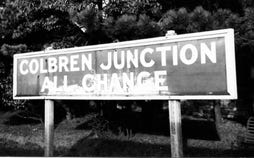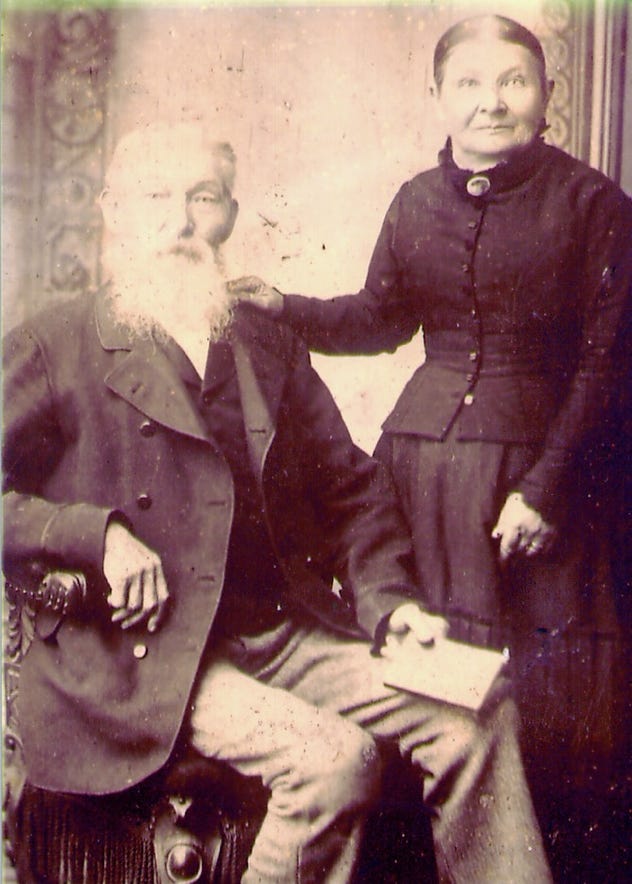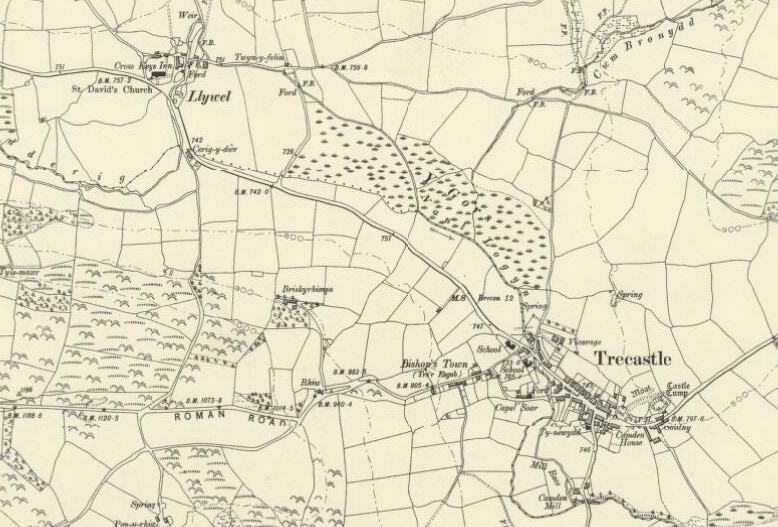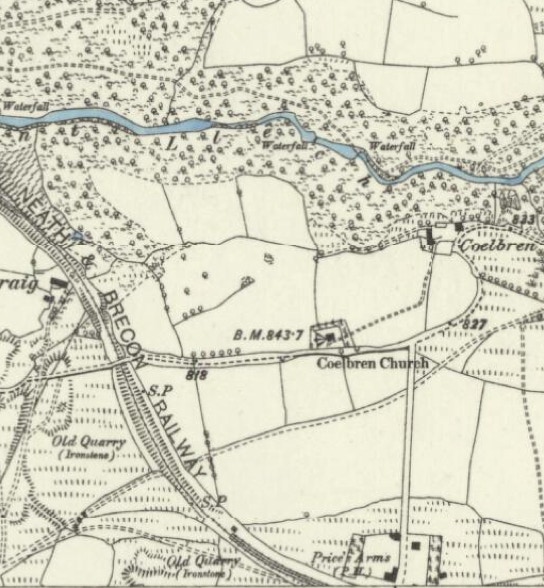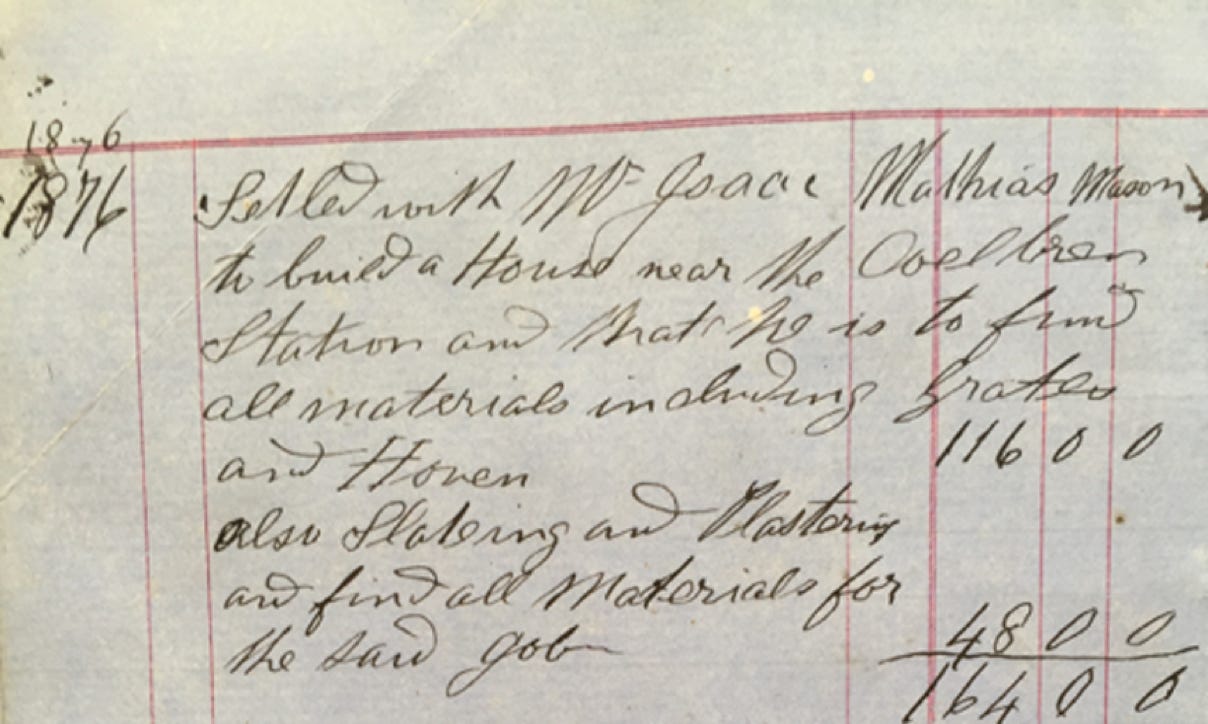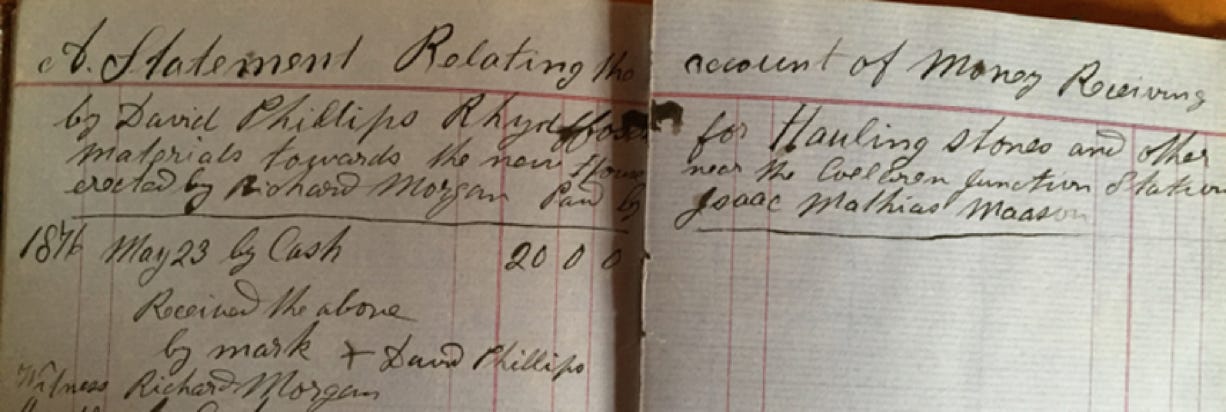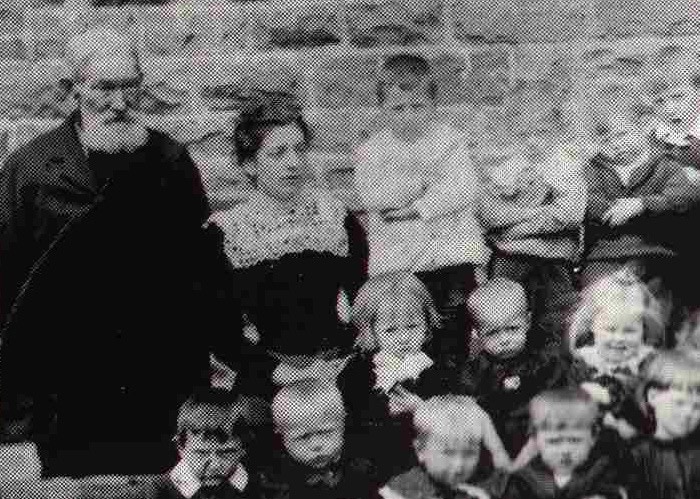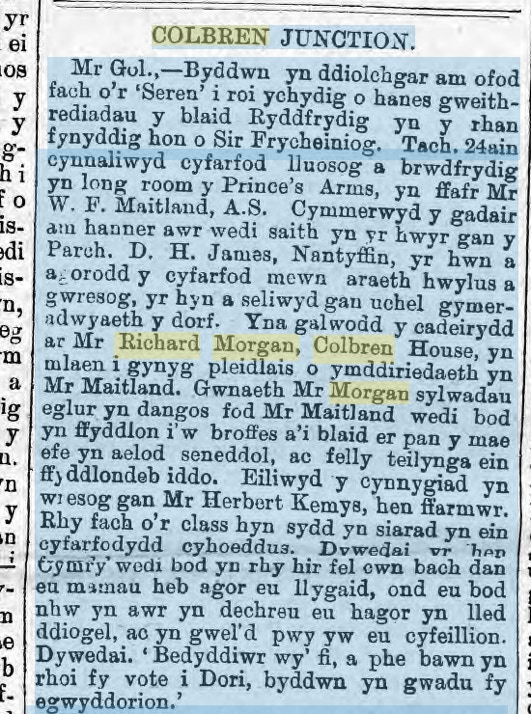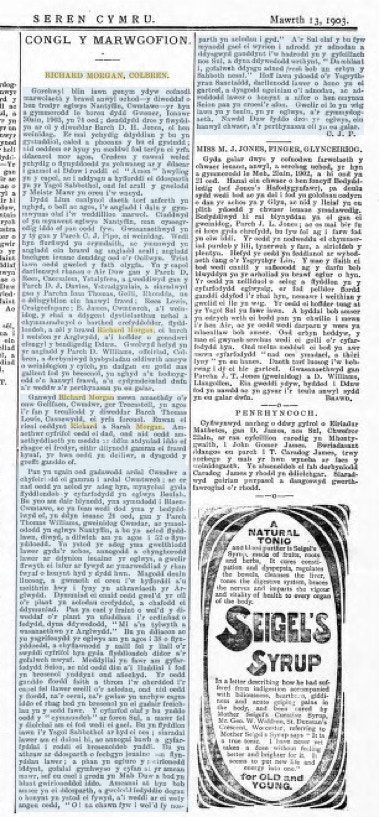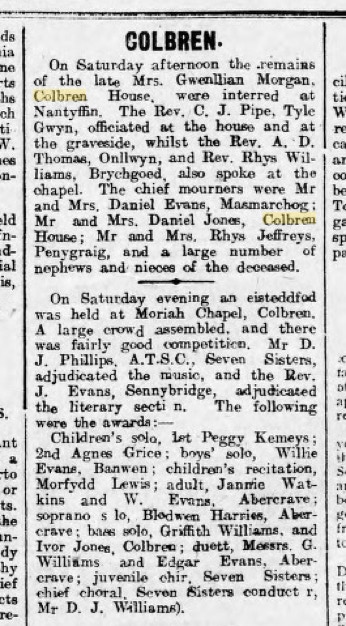Richard Morgan died aged 74, in September 1903, and a long obituary followed in Seren Cymru. An initial rough translation is given :
RICHARD MORGAN, COLBREN.
It is a very sad task to record the death of the last of the dear old brothers of Nantyffin Chapel, which occurred on the morning of Friday, January 30th, 1903, aged 74. This was a year and two days after the death of the Revd. DH Jones, his former minister. Although he was afflicted for a few hard and painful days we still did not think that his life on Earth was drawing to a close. We believed that he could see in a few more years to praise his God, to give his prayers in the chapel, and to teach and train his class in the Sunday School. Alas, instead he went to meet his maker.
On Monday, a huge crowd, from far and wide, came to the funeral to pay their respects to his mortal remains. He was buried in the churchyard of Nantyffin, a place which was his second home. His minister, CJ Pipe, officiated at home [ed. Coelbren House]. After this, a procession formed, and we joined our brother's funeral to another one; that of a young twelve-year-old boy from Onllwyn. It was very sad to see such a scene.
In the chapel, the Rev. D. Rees read parts of God's Word; the Rev DJ Davies, Ystradgynlais, gave an address as well as Rev John Thomas, Gelli, Rhondda, one of our dear brother Rees Lewis, Craigcefnparc; and B. James, Cwmtwrch. These all gave equally lofty testimonies of the our brother Richard Morgan’s religious faith and zeal, his respect for the servants of the Lord, and his love of the blessed Lord’s message of gospel.
It was also seen at the funeral of Rev. D. Williams, priest, Col-coed, and notices were received from a number of the ministers of the district, expressing their regret that they could not be present, together with their admiration of our dear brother and their deep sympathy with the widow and the relatives in their grief.
Richard Morgan was born in a farmhouse called Gellfaen, Cwmdwr, near Trecastle, close to where the late Rev. Thomas Lewis of Newport spent his early career. His parents were Richard and Sarah Morgan. His father was a responsible man, but he had no more attraction to his brothers, but he followed the steps of his elder brother, who was a tailor, and who taught him the craft.
At the age of twenty he left Cwmdwr and directed himself to the Cwmtwrch area and although he was not a [ed. Baptist] member at this time, he faithfully attended the meetings at Beulah church. He was there for three years, and then moved to Blaen-Cwmtawe, and soon afterwards he was baptized, a 24-year-old young man, by the Rev. Thomas Williams, minister of Cwmdar. He was henceforth a member of Nantyffin chapel, a faithful, diligent, and unwavering member of close to 52 years.
During this time he worked much with the cause, encouraged and advised many of the young men of the church, and the fruits of his labour are seen in the lives and conduct of most of them until this day.
He raised a large family, and he did his best to train and nurture them in the doctrine of the Lord. His soul desired to see the children as religious members, and he had his wish. When he had the privilege of seeing the children obey the ordinance of baptism, he said, “I will serve the Lord with my family”.
He was a deacon and secretary of the chapel for a time and undertook these responsible positions with great faithfulness and care, with the fellowship foremost in his mind, and thus nothing could thwart him. He had a long and heavy walk to the chapel, like many other of the members, but neither the road or the cold, nor the rain were any excuse for him to be absent. The last meeting he attended was the communion on Sunday morning, and greatly was he rewarded for receiving it.
He was very faithful to the Sunday School throughout his life, speaking a great deal about its goodness, and encouraged everyone to take part in it. He was a teacher of the young for many years; and when he explained the truth to them, he cared for the overarching purpose: that they should believe in the Son of God and be true children of Him. He always intended to devote himself to this, and ministered to tens of them during his life. His prayer at rest was, that we shall live to see every night as members all.
On the last Sunday he lived, he found his grandchildren to recite the verses they had learned to say in the fellowship on Sunday night, and said to them, "I will learn, teach you each a fresh verse by next Sunday." He was very much of the Holy Scripture, he read much of it in his home, learned scores of its verses, and he gave many of them and many old hymns of Zion when he crossed the river. It is very empty in the family, in the church, and in the community: God's will be with the chapel, our dear sister, and the relatives in their grief.
